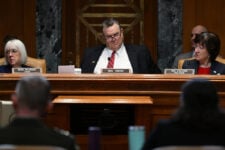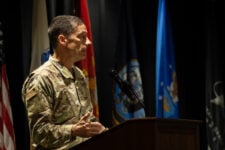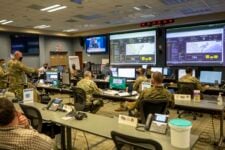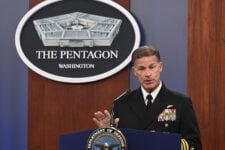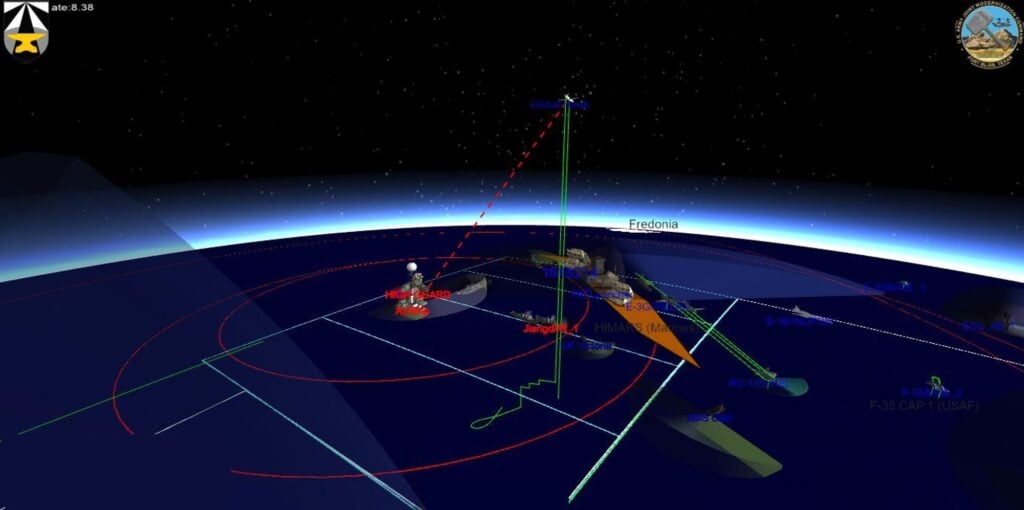
The Joint Staff’s Joint All-Domain Command and Control Campaign Plan Experiment 2 allowed Army, Navy, Air Force and Marines nodes to share near-real time information to enable sensor to shooter linkages and display it on a common operational picture. (U.S. Army Joint Modernization Command)
WASHINGTON: Pentagon efforts to fund implementation of the top-priority Joint All Domain Command and Control (JADC2) strategy are hitting multiple barriers — ranging from service-centric cultures to platform-focused lawmakers to a disjointed requirements-to-acquisition process, experts said today.
And the lack of a clear JADC2 acquisition strategy, in turn, is beginning to worry companies like Northrop Grumman and Lockheed Martin that have been investing independent research and development (IRAD) dollars in creating software-centric systems that can tie sensors to shooters and link decision-makers in near-real time.
“We do need an acquisition path,” Steven Walker, Lockheed Martin Corporation’s vice president and chief technology officer, said at a Tuesday panel discussion sponsored by the American Enterprise Institute.
Industry, Walker explained, actually is better placed than the military services to see disconnects between current C2 networks and find ways to fill those gaps.
“My company, other companies, we’re doing that mission engineering piece,” he said. “We’re building new warfighting concepts, and then we’re investing IRAD to prove out the technology. I just want to make a plug that it would be good to see the Pentagon embrace that a little bit more as we move forward with JADC2 because I think industry has a lot to contribute.”
Scott Stapp, Northrop Grumman’s CTO, echoed Walker’s concerns. “We work across all the services, and interagency. We tie all those moving pieces together, and on our own dime we can tie a thread through it,” he said.
Stapp said that one of the key problems is that the services — which by law are responsible for budgeting and managing acquisition of weapon systems — remain focused on fixing service-specific problems in connecting their individual platforms, sensors and C2 networks, rather than thinking across the width of the military.
“What I think most people don’t really understand is the services right now do not have a lot of ability to communicate across service, what I call ‘cylinders of excellence.’ And when we look at JADC2 … JAD means joint, right? It means everybody’s connected and talking and working together,” he said.
“The service today are working more what I call ‘service all domain command and control’ — and don’t blame me for the acronym, it sounds like ‘SADC2.’ But it’s really service all domain command control, it’s not really looking at joint,” he continued.
Further, Stapp noted that the Defense Department budgeting and appropriations processes are focused on platforms and individual programs, as are those in Congress for approving DoD spending.
JADC2, however, requires focusing priorities and funding on “what I would call the ‘glueware’ that ties everything together,” Stapp said. “Well, how do you get appropriated for glueware? You’ve got to go to 10 to 20 different appropriators to get everybody to agree.”
‘That Conversation Never Happens’
Marine Corps Maj. Gen. James Adams, director for requirements and capability development, Joint Staff J8, explained that part of the problem has been the traditional disconnect between the requirements process, the acquisition process and the policy development process within DoD.
“Those are the three main decision support processes in the Pentagon that happen, and they’re connected, but they’re not overlapping,” he said.
Adams said that the “big initiative” by Deputy Secretary of Defense Kathleen Hicks called “competitive advantage pathfinders” is aimed at fixing this disconnect and bringing responsible officials across those processes into a more holistic approach. “We’re trying to drive these circles of decision support together,” he said.
“In my opinion, the best requirement is not developed in the vacuum — in a dark, smoke-filled room in the basement of Pentagon — by a bunch of people like me. It’s developed in combination, in an agile format with an industry partner there, the person who knows and understands the acquisition process there, and with a military kind of operational person there. And you start to talk about things and discuss trades,” he said.
Currently, he added, “that conversation never happens.”
That said, Adams said that the Joint Requirements Oversight Council (JROC) and the Joint Staff are working to match the classified JADC2 implementation strategy to deliverables and budgets.
“With respect to the implementation plan, it was just recently signed. It’s a really good document, because it it looked very closely at the posture review of the kind of JADC2 enterprise, if you will, taking into account what was written in the strategy, and it assigned specific actions to specific people,” he said.
Leadership is now looking “across compartments” at what was funded in the fiscal 2023 budget request to ensure it matches the JADC2 implementation goals, he added, with an eye to finding “anything that was a shortfall” and plugging those gaps during the 2024 budgeting cycle.





